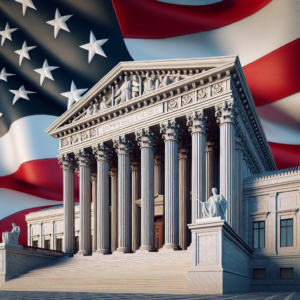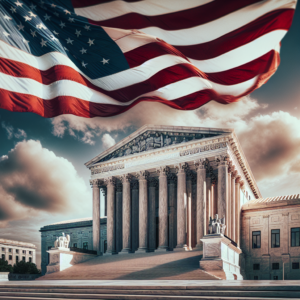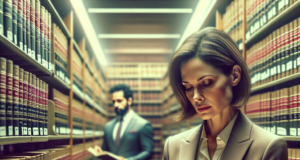Unveiling the Shocking Trends Reshaping Civil Litigation Today

The landscape of civil litigation is undergoing a significant transformation, influenced by a myriad of factors that reflect the complexities of modern society. As the legal system adapts to the changing needs of individuals and businesses, understanding these trends is crucial for practitioners, clients, and policymakers alike. This article delves into the shocking trends reshaping civil litigation today, exploring the impact of technology, the rising costs of litigation, the shift towards alternative dispute resolution, the influence of social media, and predictions for the future of legal practices.
1. Introduction: Understanding the Evolution of Civil Litigation in Modern Society
Civil litigation has historically been a cornerstone of the legal system, providing a mechanism for individuals and entities to resolve disputes through the courts. However, as societal norms evolve and new challenges emerge, the civil litigation landscape is shifting dramatically. Factors such as globalization, increased regulatory scrutiny, and the growing complexity of legal issues have necessitated a reevaluation of traditional practices. This evolution is not merely a response to external pressures; it reflects a broader societal shift towards efficiency, accessibility, and the integration of technology into everyday life. As we navigate this changing terrain, it is essential to recognize the implications of these trends on the legal profession and the individuals it serves.
2. The Impact of Technology: How Digital Tools Are Transforming Legal Practices
The advent of technology has revolutionized civil litigation, introducing digital tools that enhance efficiency and accessibility. From e-discovery platforms that streamline the process of gathering and reviewing evidence to case management software that helps attorneys organize their workflows, technology is reshaping how legal practitioners operate. Furthermore, the rise of artificial intelligence (AI) is enabling predictive analytics, allowing lawyers to assess case outcomes with greater accuracy. Virtual courtrooms and remote hearings, accelerated by the COVID-19 pandemic, have also made legal proceedings more accessible to a broader audience. As these digital tools continue to evolve, they promise to further transform the legal landscape, making civil litigation more efficient and cost-effective.
3. Rising Costs of Litigation: Analyzing the Financial Burden on Plaintiffs and Defendants
One of the most pressing issues in civil litigation today is the escalating cost associated with legal disputes. The financial burden on both plaintiffs and defendants has reached alarming levels, often deterring individuals from pursuing legitimate claims. Factors contributing to these rising costs include extensive pre-trial discovery, prolonged litigation timelines, and the increasing complexity of legal issues. Additionally, the high fees charged by legal professionals can create significant barriers to access for those with limited financial resources. This trend raises critical questions about the fairness and accessibility of the legal system, prompting calls for reforms that could alleviate the financial strain on parties involved in civil litigation.
4. Alternative Dispute Resolution: The Shift Towards Mediation and Arbitration
In response to the challenges posed by traditional litigation, there has been a notable shift towards alternative dispute resolution (ADR) methods such as mediation and arbitration. These approaches offer a more flexible and often less costly means of resolving disputes outside of the courtroom. Mediation, in particular, emphasizes collaboration and communication between parties, allowing for creative solutions that may not be available through litigation. As courts become increasingly congested and the costs of litigation rise, ADR has gained traction as a viable alternative, appealing to those seeking a more expedient resolution. This trend reflects a broader societal preference for negotiation and compromise over adversarial confrontation, reshaping the way disputes are resolved.
5. Social Media’s Role: Exploring the Influence of Online Platforms on Legal Cases
The rise of social media has introduced a new dimension to civil litigation, influencing both the nature of evidence and the behavior of parties involved in legal disputes. Online platforms serve as a rich source of information, with social media posts, messages, and interactions often playing a critical role in cases ranging from defamation to personal injury. However, the pervasive nature of social media also raises ethical concerns and challenges regarding privacy and the admissibility of evidence. Moreover, the public nature of these platforms can impact the perceptions of jurors and the overall dynamics of a case. As social media continues to evolve, its influence on civil litigation will likely grow, necessitating a nuanced understanding of its implications for legal practitioners.
6. Future Outlook: Predicting the Next Decade of Changes in Civil Litigation Trends
Looking ahead, the next decade promises to bring further changes to civil litigation as technology continues to advance and societal expectations evolve. We can anticipate an increased reliance on AI and machine learning to streamline legal processes and enhance decision-making. Additionally, as the demand for transparency and accountability in the legal system grows, we may see a push for reforms aimed at reducing the costs and complexities associated with litigation. The integration of blockchain technology could also revolutionize contract enforcement and dispute resolution. Furthermore, as alternative dispute resolution methods gain popularity, traditional litigation may become a last resort for many parties. Overall, the future of civil litigation will likely be characterized by a blend of innovation, efficiency, and a commitment to accessibility.
In conclusion, the trends reshaping civil litigation today reflect a dynamic interplay of technology, economics, and societal values. As practitioners and clients navigate this evolving landscape, understanding these trends is essential for adapting to the challenges and opportunities that lie ahead. The legal profession must embrace innovation while ensuring that access to justice remains a fundamental principle. By doing so, we can work towards a civil litigation system that is not only efficient and effective but also equitable and responsive to the needs of all individuals in our society.























